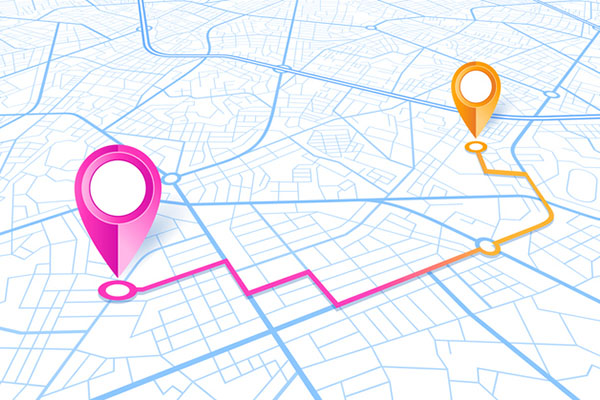The transportation and logistics (T&L) industry has experienced significant disruptions due to the steep rise in e-commerce and rapidly changing consumer expectations. With a greater variety and quantity of purchases being shipped directly to consumers’ homes, combined with expectations that necessitate rapid, often same-day deliveries, last-mile delivery strategies have never been more important.
Yet, in a new global report titled The Last Mile Sprint: State of Mobility in Transportation and Logistics, commissioned by SOTI in partnership with Arlington Research, last-mile delivery is the most inefficient process of the entire supply chain, according to 59% of T&L companies in the U.S. and 78% in Canada.
To create powerful and transparent customer experiences, 82% of respondents in the U.S. and 88% in Canada agreed that it is critical for T&L companies to ensure a mobile-first strategy around last-mile delivery. A mobile-first strategy is defined as viewing smartphones, tablets and task-specific apps as the primary tools for getting work done.
“The stakes have never been higher for transportation and logistics companies in North America as consumers increasingly embrace a delivery culture,” says Shash Anand, Vice President of Product Strategy, SOTI. “By implementing a robust mobile-first strategy, companies will not only be able to provide better customer experiences, but will increase speed, minimize costs, ensure transparency in the delivery channel for the customer and end consumer, and edge out the competition.”
Anand told SCMR in an interview that the report found 50% of T&L companies stated outdated tech has caused them or will cause them to lose customers.
“It’s clear they can no longer afford to operate as they did 5 or 10 years ago - they must modernize and adapt in order to remain competitive in today’s current climate,” he said. “Consumer expectations are also changing rapidly all over North America. They now require rapid, often same-day updates and deliveries. Failure to cater to these rapidly changing expectations and drive efficiency in operations can result in devastating losses - needless to say, mobile-first strategies have never been more important.”
Companies know that a mobile-first strategy for last-mile delivery can transform their business operations. In fact, 74% in the U.S. and 80% in Canada agree that their organization would benefit, or have already benefited, from an effective mobile-first strategy for last-mile delivery. Moreover, 49% of respondents in North America with a mobile-first strategy in place for last-mile delivery said that it has effectively reduced their operational costs.
“In today’s fast-moving T&L sector, companies must adapt their supply chains with mobile technology to help simplify workflows and drive efficiency in their operations. Failing to do so could have a devastating effect on their business, especially now when speedy and trackable deliveries are no longer a ‘nice-to-have’, but a customer expectation,” says Todd Greenwald, General Manager, Heartland Computers, Inc.
In addition, an effective mobile-first strategy provides companies with increased productivity and visibility into their business. In North America, more than half (58%) of T&L professionals said a mobile-first strategy has enabled them to gain visibility into critical aspects of their supply chain.
In the U.S. specifically, 45% indicated it has created a better, more responsive customer experience and 44% of respondents have used their mobile strategies to support real-time decision-making.
Surprisingly, the report found that nearly half (49%) of T&L companies globally said their technology is outdated. In Canada, nearly 7 out of 10 (68%) T&L companies indicated their technology is outdated, and 41% in the U.S.
The report also found that T&L companies lacking a mobile-first strategy are at risk of losing customers. Half of T&L executives whose organizations use outdated technology believe they will lose, or have already lost, customers because of it and nearly one third (30%) of senior management using technology directly attributed this to falling behind competitors.
“Ensuring your technology is constantly updated and having an integrated mobility and IoT management platform in place is an effective operations strategy that helps minimize disruptions to your business and maintain high levels of customer satisfaction,” concludes Anand.
Globally, nearly a third (32%) of senior executives at T&L companies believe mobile technology can be leveraged to improve operational efficiencies and reduce operational costs to increase their organization’s profitability within the next five years.
SC
MR


Latest Supply Chain News
- AI, virtual reality is bringing experiential learning into the modern age
- Humanoid robots’ place in an intralogistics smart robot strategy
- Tips for CIOs to overcome technology talent acquisition troubles
- There is still work to do to achieve supply chain stability
- Blooming success: The vital role of S&OE in nurturing global supply chains
- More News
Latest Resources

 Explore
Explore
Business Management News
- AI, virtual reality is bringing experiential learning into the modern age
- Tips for CIOs to overcome technology talent acquisition troubles
- There is still work to do to achieve supply chain stability
- Blooming success: The vital role of S&OE in nurturing global supply chains
- Supply chain salaries, job satisfaction on the rise
- How one small part held up shipments of thousands of autos
- More Business Management
Latest Business Management Resources

Subscribe

Supply Chain Management Review delivers the best industry content.

Editors’ Picks





